
Maximizing ROI: The Financial Benefits of Integrating Email Marketing into Your Internet Marketing Strategy.

In today's digital landscape, maximizing return on investment (ROI) is paramount for every internet marketer. Among the plethora of marketing tactics available, integrating email marketing stands out as a proven strategy to enhance financial outcomes. By strategically harnessing the power of email, businesses can unlock a multitude of financial benefits.
From nurturing leads to retaining loyal customers, email marketing offers a cost-effective solution for driving conversions and increasing revenue streams. Its ability to deliver personalized, targeted content directly to subscribers fosters stronger engagement and higher conversion rates. Moreover, the relatively low costs associated with email campaigns make it an attractive option for businesses of all sizes. By leveraging analytics and A/B testing, marketers can refine their email strategies to maximize ROI further.
In this introduction, we delve into the intricacies of integrating email marketing into your internet marketing strategy, exploring how it can amplify financial success and propel your business towards sustainable growth.
Maximizing ROI through the integration of email marketing
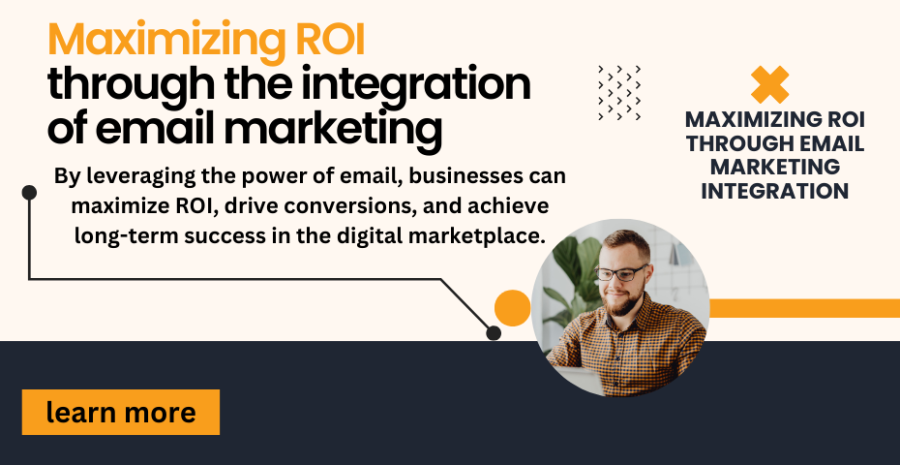
Maximizing ROI through the integration of email marketing into your internet marketing strategy is not just a possibility; it's a strategic imperative in today's competitive digital landscape.
Firstly, email marketing offers unparalleled cost-effectiveness, allowing businesses to reach a large audience with minimal investment. This affordability extends across various aspects, including campaign creation, delivery, and tracking, making it an attractive option for businesses aiming to optimize their marketing budgets.
Moreover, the ability to segment email lists based on demographics, behaviors, and preferences enables marketers to deliver highly targeted content, increasing the likelihood of conversion. By tailoring messages to specific audience segments, businesses can achieve higher engagement rates and, consequently, higher returns on their marketing investments.
Additionally, email marketing provides a platform for fostering long-term relationships with customers. Through regular communication and personalized content, businesses can nurture leads, build trust, and establish brand loyalty, resulting in repeat purchases and increased customer lifetime value.
Furthermore, email marketing offers unparalleled measurability and analytics capabilities, allowing marketers to track key metrics such as open rates, click-through rates, and conversion rates in real-time. This data-driven approach empowers businesses to refine their strategies continuously, optimize campaign performance, and maximize ROI.
In addition to its direct financial benefits, email marketing also serves as a catalyst for other marketing initiatives. For example, integrating email with social media campaigns can amplify reach and engagement, driving more traffic to your website and ultimately increasing conversions.
Another crucial advantage of email marketing is its scalability.
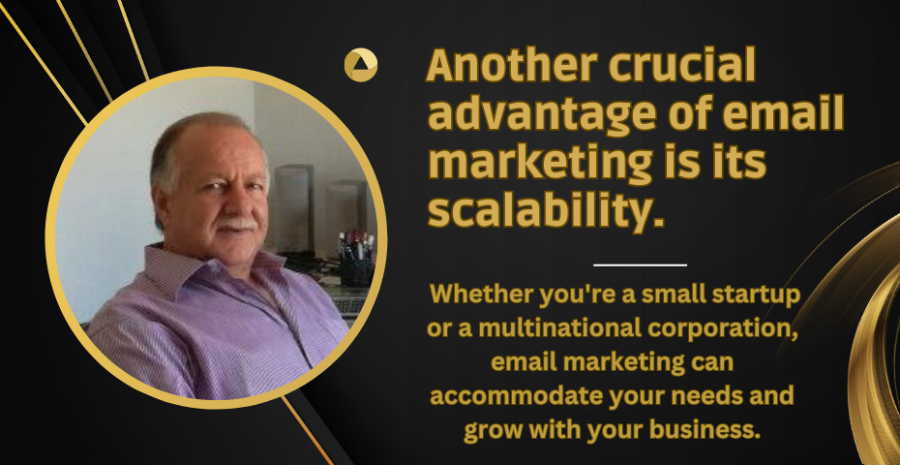
Another crucial advantage of email marketing is its scalability. Whether you're a small startup or a multinational corporation, email marketing can accommodate your needs and grow with your business. With the right tools and strategies in place, businesses can scale their email marketing efforts to reach new markets and expand their customer base while maintaining high levels of efficiency and effectiveness.
Furthermore, email marketing offers unparalleled flexibility and versatility, allowing businesses to experiment with different formats, messaging strategies, and targeting options to find what resonates most with their audience.
Additionally, email marketing provides a direct line of communication to your audience, bypassing the barriers of algorithms and ad blockers. With email, you can ensure that your message reaches your intended recipients' inboxes, increasing the likelihood of engagement and conversion.
Moreover, email marketing enables businesses to stay top-of-mind with their audience by delivering timely and relevant content directly to their inbox. Whether it's a newsletter, promotional offer, or personalized recommendation, email allows businesses to maintain regular communication with their audience, keeping them engaged and informed about new products, services, or updates.
Furthermore, email marketing offers a high level of control and ownership over your marketing efforts. Unlike other channels where algorithms and policies can dictate visibility and reach, with email, you have full control over your subscriber list, content, and sending frequency, allowing you to tailor your approach to best suit your business objectives.
In conclusion, integrating email marketing into your internet marketing strategy offers a myriad of financial benefits, including cost-effectiveness, targeted reach, relationship-building opportunities, measurability, scalability, flexibility, and control. By leveraging the power of email, businesses can maximize ROI, drive conversions, and achieve long-term success in the digital marketplace.
The importance of the first line or heading in attracting the attention of a client cannot be overstated
.png)
The importance of the first line or heading in attracting the attention of a client cannot be overstated, especially in the context of maximizing ROI through email marketing integration. This initial hook serves as the gateway to engaging your audience and piquing their interest in your message.
Crafting a compelling and attention-grabbing headline is essential for capturing the reader's attention amidst the sea of emails inundating their inbox daily. A well-crafted headline should be concise, clear, and relevant, offering a glimpse into the value proposition of your email and enticing the recipient to open it.
The first line sets the tone for the entire email and establishes a connection with the reader from the outset. Whether it's posing a thought-provoking question, teasing an exclusive offer, or highlighting a problem-solving solution, the first line should be designed to resonate with the recipient's interests and motivations.
Moreover, the first line serves as a crucial opportunity to personalize the email and make the recipient feel valued and understood. By incorporating personalized elements such as the recipient's name or referencing their past interactions with your brand, you can increase the likelihood of engagement and conversion.
In addition to capturing attention, the first line also plays a pivotal role in optimizing email deliverability and inbox placement. Email algorithms prioritize messages based on various factors, including open rates and engagement levels. A compelling first line can increase the likelihood of recipients opening your email, signaling to email providers that your message is relevant and deserving of inbox placement.
Furthermore, the first line serves as a preview of the content to follow, providing recipients with a glimpse of the value proposition and incentive to continue reading. By sparking curiosity and intrigue, you can encourage recipients to delve deeper into your email, increasing the chances of conversion and ultimately maximizing ROI.
The return on investment (ROI) on email marketing.
%20on%C2%A0email%C2%A0marketing_.png)
The return on investment (ROI) of email marketing can vary widely depending on various factors such as industry, audience, campaign strategy, and execution. However, studies and industry benchmarks suggest that email marketing typically offers a high ROI compared to other digital marketing channels.
This figure is based on research conducted by the Data & Marketing Association (DMA), which consistently reports a high ROI for email marketing campaigns across industries.
Moreover, a study by Litmus found that email marketing generates an average ROI of 4,200%, meaning that for every $1 spent on email marketing, businesses can expect to earn $42 in return. This underscores the significant potential for generating revenue and driving business growth through email marketing efforts.
Additionally, email marketing is known for its cost-effectiveness and scalability, further enhancing its ROI potential. With relatively low costs associated with email campaign creation, delivery, and tracking, businesses can achieve impressive returns even with modest investment.
Furthermore, the ability to segment email lists, personalize content, and track performance metrics allows businesses to optimize their email marketing efforts continually, maximizing ROI over time.
Overall, while the exact ROI of email marketing may vary depending on individual circumstances, industry benchmarks and studies indicate that email marketing consistently delivers a high return on investment, making it a valuable asset for businesses looking to drive revenue and maximize their marketing efforts.
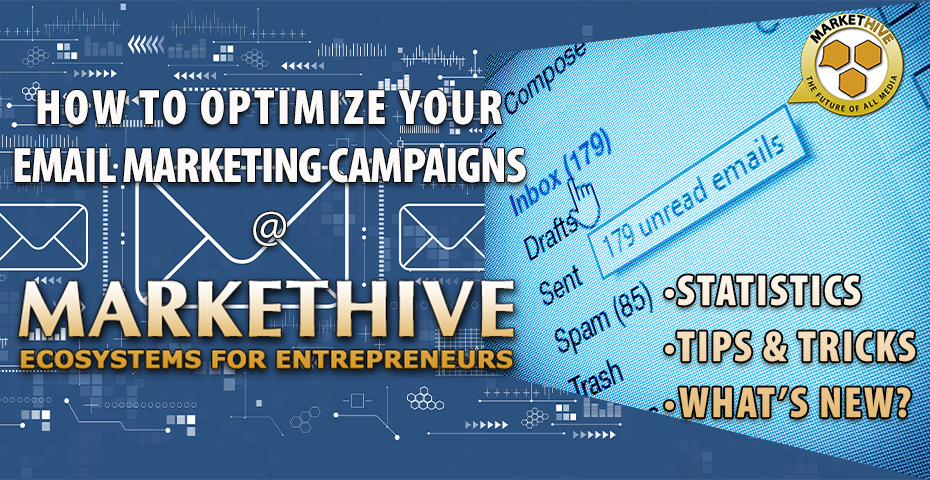
Since the dawn of social media marketing, it’s been purported that email marketing will cease to be of any value as a marketing strategy. On the contrary, email continues to be one of the most popular digital channels that marketers can use to communicate with customers and subscribers, bringing in significant ROI for businesses worldwide.
According to Statista, daily email users will climb to 4.6 billion by 2025. Despite the growth and prominence of mobile messengers and chat apps, e-mail is an integral part of everyday online life. Email is a great way to connect with busy clients on the move, eating breakfast, commuting, at work, in bed, or just about anywhere with billions of users per day.
Furthermore, the number of emails sent and received globally has increased since 2017. While roughly 319.6 billion emails were estimated to have been sent and received each day in 2021, this figure is expected to increase to over 376.4 billion daily emails by 2025.
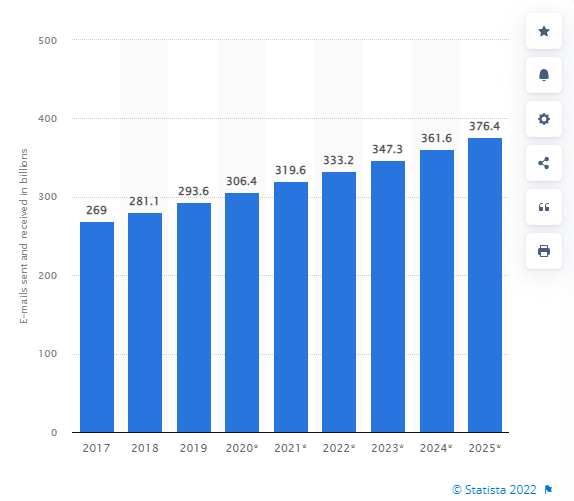
Email marketing has managed to defy its predicted demise and remain central to digital communication, and continues to grow in acceptance. Notably, email has seen higher click-through rates than social media regarding online advertising.
Past studies and marketing statistics have found that 4.24% of visitors from email marketing will make a purchase compared to only 2.49% of visitors from search engines and 0.59% from social media.
The email has been around for decades, and the concept of email autoresponders as a strategic marketing tool was invented by the Founder and CEO of Markethive, Thomas Prendergast. He subsequently refined and established the system and the concept of Automated Marketing which we now call Inbound Marketing.
.png)
As the number of emails sent and received each day increases globally, data experts agree that more than 120 business and consumer emails are sent and received by the average person. It would be fair to say not all those emails are read or even opened.
Given the statistics above, it's crucial to reevaluate your email marketing campaigns periodically and look for ways to make your emails stand out. To capture your recipient’s attention, you need to craft an intriguing subject line, purposeful salutation, and opening sentence.
Almost two-thirds (59%) of B2B marketers say email is the most effective channel, and marketing through email is the most effective tactic. The same group of B2B marketers surveyed claimed there are some dynamic tactics they can take to make their emails even more effective.
For example, according to Experian, 56% of email marketers who use emojis in their subject lines have a higher open rate. When used in subject lines, emojis stand out and separate your email from the mountains of other emails.
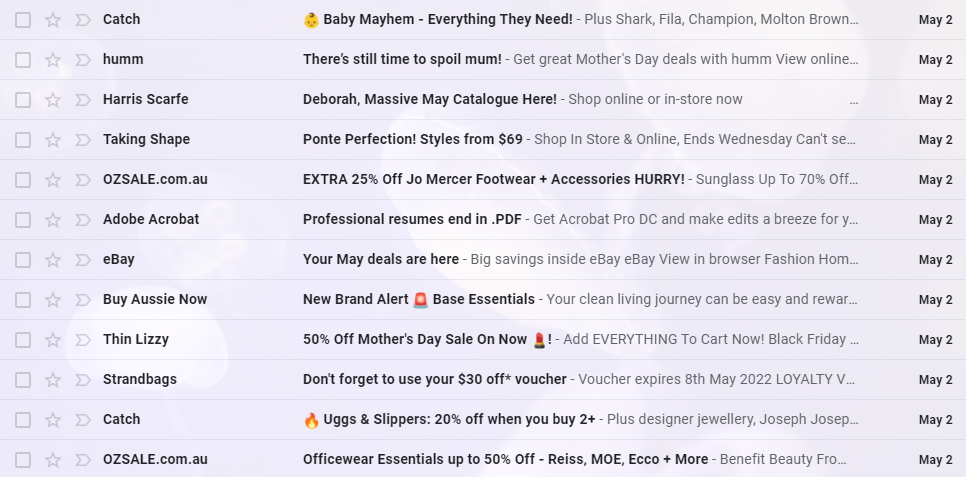
Adding emojis to headlines started in 2015 and has become more prevalent in subsequent years. Studies have shown that emotional content can increase the effectiveness of a marketing campaign by as much as 70%. Emojis show a facial expression related to the message conveyed or an icon related to the product or brand.
Emojis help break the language barrier as they generally hold the same meanings. They also create a more visual element and can retain your customer's attention. They can generate urgency or trigger emotions when used in a subject line, particularly for B2C.
Be sure to keep it relevant to your email subject and not overdo the number of emojis. More than two will look spammy and can put people off. You will need to discern what works for your brand and audience. In some cases, emojis might not be the best option.
Industries considered serious like law, accounting, and B2B may see it as unprofessional. However, your industry shouldn’t dictate what may work for your emails. Many emojis could be suitable, like calculators, clipboards, stop signs, dollar symbols, etc. There are many options to find the right emojis for your company.
Appboy conducted a poll and found that people enjoy emojis in general. More than 64% like or love emojis, compared to only 6% who dislike them. Consumers are exposed to emojis regularly in their everyday life: 87% use them in their texting and messaging, and 68% receive a message with emojis from friends or family once a day or more.
The good news for marketers is that 39% of participants thought the emoji touch in emails from brands was fun. Although there has been a steady rise in emoji-focused email campaigns, 60% said they received emails from brands only once a month, and 35% have never received an emoji campaign.
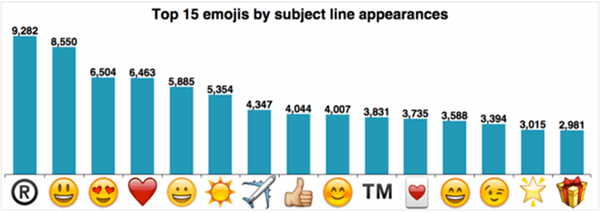
Image source Optinmonster
By using emojis in the correct context, you could create the top email subject lines in your industry. Not only do emojis capture interest, but they can boost your email's response rate, too.
Now that we’ve caught the recipient's attention with a fetching and novel subject line, a robust email introduction encourages your reader to continue scanning the body of your message.
The best emails have an engaging greeting and opening sentence that secures the recipient’s interest and buy-in. Ideally, a captivating introduction ultimately leads readers to take action.
A thoughtful email opening sentence is helpful when asking recipients to:
A compelling opener sets the tone for your message, and it can also entice recipients to spend more of their time with the message and help your email sidestep the terrible “trash bin.”
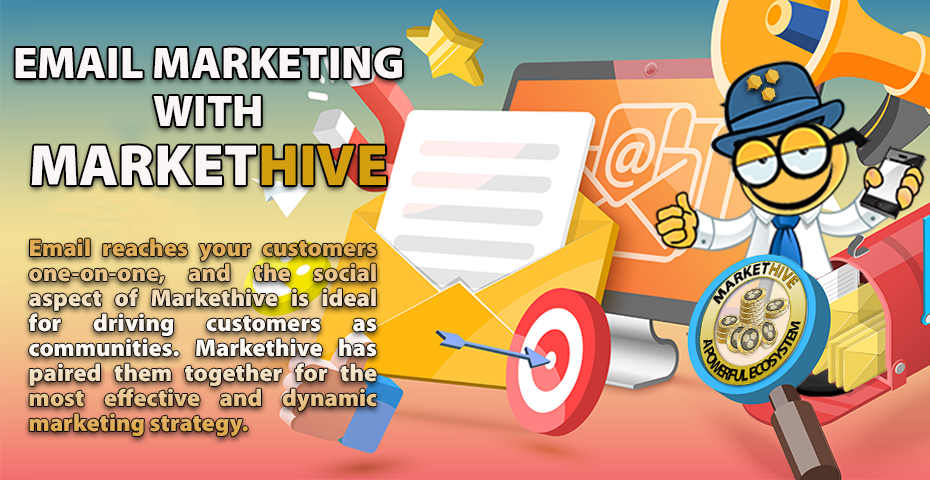
Below is a list of email greetings and opening sentences that keep recipients and their time a priority.
Appropriate Salutations
1. Dear %%Name%%
This email greeting is an appropriate salutation for formal email correspondence. It’s typically used in cover letters, official business letters, and other communication when you want to convey respect for the recipient. Personalization can improve open rates by up to 26%
Although honorifics like “Mr.” and “Mrs.” were once accepted, they risk misgendering or erroneously assuming the reader’s marital status. So, just use either first name or full name to be on the safe side.
2. Hi or Hello
As far as email greetings go, an informal “Hi” followed by a comma is acceptable in most work-related messages. If a slightly more formal tone is preferred, consider the salutation “Hello.”
Although this is considered an informal greeting, it also conveys a straightforward and friendly tone.
3. Greeting A Group Of People
When writing an email message to two or more people, you have a few options. “Hi everyone,” “Hi team,” or “Hi %%department name%% team” are informal yet professional ways to greet a group of people.
They also avoid gender-specific addresses to a group, like “Hi guys,” “Hi ladies,” or “Gentlemen,” which might not accurately describe the recipients.
Engaging Email Opening Sentences
4. I hope your week is going well, or I hope you had a lovely weekend
These are effective email opening sentences because they acknowledge your reader first and help build rapport with a colleague you already know or with whom you want to develop a friendly working relationship.
5. I’m reaching out about . . .
Beginning an email with “I’m reaching out about . . . ” is polite and direct and clarifies the purpose of the email. With hundreds of email correspondences transmitted in a single business day, this approach shows you’re being conscientious about the recipient’s time by getting straight to the point.
Stating your intent also avoids miscommunication or confusion about what you need from the reader.
6. Thanks for . . .
Expressing gratitude is another way to put the reader first. If the email you’re writing is in response to an email or action by the recipient, acknowledging that at the start builds on workplace companionship.
The salutations and opening sentences below carry a stiff tone and, in some cases, suggest a careless approach. If your goal is to come across as genuine and thoughtful, it’s best to avoid these phrases.
1. To whom it may concern
Although “To whom it may concern” seems like a professional salutation, it’s impersonal and overused. It suggests that you didn’t care to confirm who your recipient is or whether your message pertains to them.
This also applies to the email greeting, “Dear Sir or Madam.” In this case, the gender-binary greeting is dated and could be considered noninclusive.
2. Hi %%Misspelled Name%%
Confirm that you've used the correct spelling when using the recipient’s name in an email salutation. Typos happen, but misspelling a person’s name sends a red flag that you didn’t write your message with care or attention to detail.
3. Dear %%ENTER NAME HERE%%
Misspelling a recipient’s name in an email greeting should be avoided, as should another salutation blunder: entirely forgetting to enter their name into a prewritten template.
Using an email template without any personalization in the hope of captivating your reader will likely be ineffective. If you must use a templated message for efficiency, always double-check that you’ve changed any placeholders in the salutation with the recipient’s correctly spelled name.
4. Can you do me a favor?
When you don’t know the recipient and email them for the first time, an opening sentence like “Can you do me a favor?” can feel abrupt and has a self-serving tone.
Instead, consider an email opening sentence that concisely explains the problem you’re hoping to solve with their assistance, like “I’m reaching out about . . . ”
5. I know you’re busy, but . . .
This email introduction, at best, assumes the reader’s time is precious. At worst, it suggests that you’re aware of that fact, but you deserve their attention nonetheless.
Regardless of your relationship with the reader, avoid this introductory sentence and briefly explain why you’re messaging them.
6. Let me introduce myself
This email opener is typically used for email recipients for the first time. Beginning an email with “Let me introduce myself” is like narrating your introduction, and it sounds declarative but wastes time. Instead, cut to the chase.
It’s essential to realize what you need to do to get the attention of your customers when their inboxes are already saturated with messages. Take the time to think about improving your email marketing strategy to ensure your emails rise above the clutter.
.png)
Email marketing is the undisputed leader in terms of ROI. From a marketing perspective, the statistics on reach and engagement show email open rates are generally 20-30%, unlike the organic reach on Facebook at only 2-6%. (i.e., the number of your fans who see your posts in their Newsfeed)
Likewise, click-through rates (CTR) from email are generally in the 3% range, while CTR on LinkedIn is in the 0.6% range. However, email marketing is not in competition with social media, nor are they separate entities. Combined, they offer a more holistic approach and provide a seamless experience for customers.
Markethive offers a comprehensive, inclusive platform integrating a social interface, remote broadcasting to other social media and digital sites, and inbound marketing mechanisms that bring brands and customers together.
Email delivery is a top priority at Markethive and a powerful aspect of our inbound marketing system. It has earned the reputation of producing an emailing system that delivers your messages to 97% of your recipients’ accounts with 100% delivery to their INBOX.
The Markethive email autoresponder system is free when you join Markethive and is built for beginners through to Entrepreneurs and Business Owners at any level. There are no limitations on the amount or size of your list of subscribers and no upcharges.
Email reaches your customers one-on-one, and the social aspect of Markethive is ideal for driving customers as communities. Markethive has paired them together for the most effective and dynamic marketing strategy.
.png)
The current email autoresponder in Markethive sends a series of emails out linearly. Segments are sequenced to be delivered every day, alternate day, or whatever day you choose when configuring your email campaign.
The great news is that we have an alternative new email system being developed, consisting of more in-depth programming that will make the delivery of your emails more dynamic and intuitive. The program will identify what emails were opened and send out the following email aligned with the first email.
The recipient's actions within that email will determine which type of email will subsequently be delivered to them. If the email is not opened, it will not follow up with a second email. So the system will fork off the original email depending on any given outcome.
The report on your email delivery will have more concise data displaying how many overall emails went out, how many were delivered, how many were opened, and how many bounced back as rejected due to errors in the address or full inbox issues.
The whole purpose behind this is not to spam people or hit them with messages they don’t want but to produce quality material that helps educate people and those looking for answers to their particular problems through systems like this. By using these methods, you establish authority, and the credibility that your sphere of influence you create will appreciate what you are doing.
You will be able to keep using Markethive’s original autoresponder; you will now just have a choice.
For all the latest updates on what’s happening in Markethive, come to our weekly meetings on Sundays at 10 am Mountain time. The link to the meeting room is in the Markethive calendar.
See you there, and God Bless You.
(18).jpg)
About: Andries vanTonder
Over 40 years selfemployed
He is a Serial Entrepreneur, an Enthusiastic supporter of Blockchain Technology and a Cryptocurrency Investor
Find me: Markethive Profile Page | My Twitter Account | My Instagram Acount | and my Facebook Profile.
